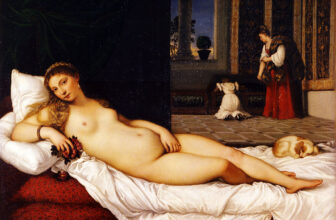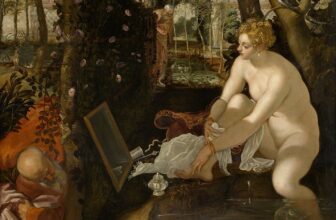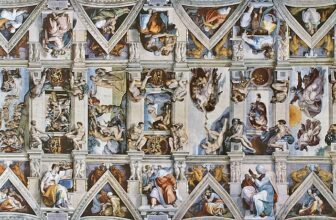The Controversy of Hylas and the Nymphs: Art, Myth, and Modern Perspectives
Few paintings have stirred as much debate as Hylas and the Nymphs, a masterpiece by John William Waterhouse. Created in 1896, the painting is a quintessential example of the Pre-Raphaelite Brotherhood’s fascination with mythology, beauty, and sensuality. However, more than a century after its creation, it found itself at the center of an unexpected controversy when it was temporarily removed from public display in 2018. This decision sparked heated discussions about censorship, feminism, and the evolving perception of classical art in modern society. But why did this painting become so controversial? To understand the debate, we must delve into its artistic origins, the mythological story it represents, and the reasons behind its contested removal.
Who Painted Hylas and the Nymphs?
Hylas and the Nymphs was painted by John William Waterhouse, a leading figure of the Pre-Raphaelite movement. Born in 1849, Waterhouse was heavily influenced by classical mythology and literature. His works often depicted tragic heroines, romanticized settings, and dreamlike, ethereal beauty.
Waterhouse’s art was marked by its meticulous attention to detail, vibrant color palette, and an almost photographic realism. He drew inspiration from Renaissance techniques while incorporating the ideals of the Pre-Raphaelites, a group of artists who rejected the industrialization of art and sought to return to the intricate styles of early Renaissance painters.
In Hylas and the Nymphs, Waterhouse’s signature style is evident in the delicate rendering of the female figures, the soft lighting, and the lush, immersive background. The painting embodies a hypnotic stillness, capturing the precise moment before Hylas meets his doomed fate.
The Mythological Story of Hylas and the Nymphs
To fully appreciate the significance of the painting, one must understand the ancient Greek myth that inspired it. Hylas was a beautiful youth and a companion of Heracles (Hercules). According to legend, he joined the Argonauts on their quest for the Golden Fleece. However, during a stop on their journey, he ventured into a forest to fetch water from a spring.
As Hylas bent down to collect water, he caught the attention of a group of water nymphs (naiads), who were mesmerized by his beauty. Overcome with desire, the nymphs lured him into the water, where he was either drowned or transformed into one of them, depending on the version of the myth. Despite Heracles’ desperate search, Hylas was never found, and the Argonauts were forced to leave without him.
This myth has been interpreted in various ways, some see it as a cautionary tale about beauty and temptation, while others perceive it as a metaphor for the transient nature of youth and innocence. Waterhouse’s painting captures this moment of seduction, depicting Hylas surrounded by seven enchanting nymphs, their expressions both inviting and enigmatic.
Why Was Hylas and the Nymphs Removed?
In 2018, Manchester Art Gallery made the controversial decision to temporarily remove Hylas and the Nymphs from public display. The move was initiated as part of a project by contemporary artist Sonia Boyce, who aimed to provoke discussion about how historical artworks are viewed through a modern lens. The gallery claimed that the removal was not an act of censorship but an invitation to dialogue about issues of gender, sexuality, and representation in art.
The decision was met with immediate backlash. Critics argued that it was an unnecessary act of political correctness that undermined artistic heritage. Many feared that this could set a dangerous precedent for the removal or alteration of historical artworks based on contemporary sensibilities. Others pointed out that the painting itself does not depict anything explicitly offensive but rather represents a well-known mythological scene.
On the other hand, supporters of the removal argued that the artwork perpetuates outdated notions of male entitlement and female objectification. They contended that the painting, viewed through a modern feminist perspective, could be interpreted as a glorification of non-consensual seduction or abduction.
After a wave of public outcry, the painting was reinstated within a week, accompanied by an expanded discussion about its historical context and the debate it had generated. The controversy highlighted the complex relationship between art and contemporary values, raising important questions about how museums should engage with their collections in an evolving social landscape.
Art, Censorship, and Modern Interpretations
The temporary removal of Hylas and the Nymphs is part of a broader conversation about the role of museums in addressing social and cultural shifts. In recent years, many historical artworks have been re-evaluated through modern ethical and political frameworks.
One of the key arguments against censorship in art is that it risks erasing historical context and diminishing the ability of future generations to engage critically with the past. Artworks like Waterhouse’s painting are products of their time, reflecting the artistic, cultural, and social attitudes of their era. Rather than removing or altering such pieces, some suggest that museums should provide additional context, enabling viewers to interpret them with a nuanced understanding.
Conversely, some advocate for a more proactive approach in addressing problematic elements in historical art. They argue that museums have a responsibility to critically examine their collections and acknowledge how artistic representations have contributed to the shaping of cultural norms, including those that may be seen as oppressive or exclusionary.
Legacy and Enduring Impact
Despite the controversy, Hylas and the Nymphs remains one of Waterhouse’s most celebrated works. It continues to captivate viewers with its mesmerizing beauty, evocative storytelling, and painterly brilliance. The painting serves as a powerful example of how classical art remains relevant in contemporary discussions, provoking thought and debate long after its creation.
Ultimately, the debate surrounding Hylas and the Nymphs reflects the evolving relationship between art and society. While interpretations of historical works may change over time, the fundamental value of art as a medium for dialogue, reflection, and inspiration remains constant. Whether viewed as a masterpiece of mythological storytelling or a contentious depiction of gender dynamics, Waterhouse’s painting continues to spark important conversations about the ways we perceive and engage with art in the modern age.
The Hylas and the Nymphs controversy highlights the challenges that arise when historical artworks are scrutinized through contemporary lenses. While some see such reassessments as necessary progress, others view them as excessive revisions of artistic heritage. The Manchester Art Gallery’s decision to remove and later reinstate the painting serves as a case study in how museums navigate these debates in an increasingly socially conscious world.
Ultimately, the story of Hylas and the Nymphs, both the myth and the painting, remains as compelling as ever. Whether interpreted as a tragic tale of seduction, a metaphor for loss, or a subject of modern critique, it continues to inspire discussions on the intersection of art, history, and evolving cultural perspectives. The painting’s journey from masterpiece to controversy and back again only underscores the enduring power of art to provoke, challenge, and captivate audiences across generations.




